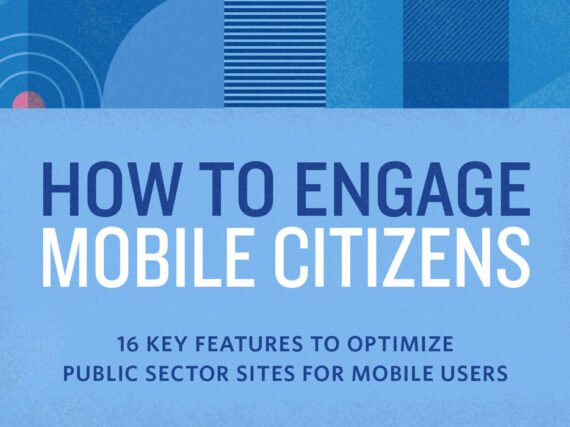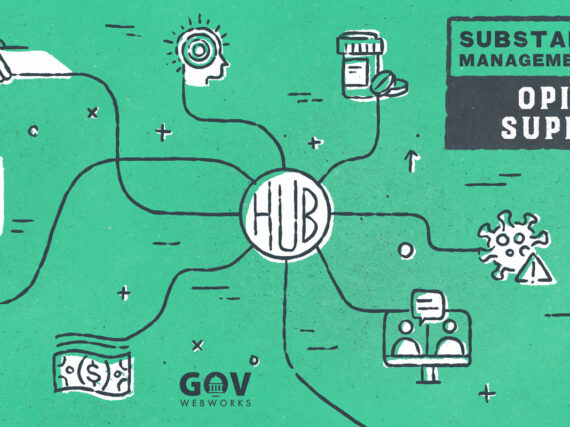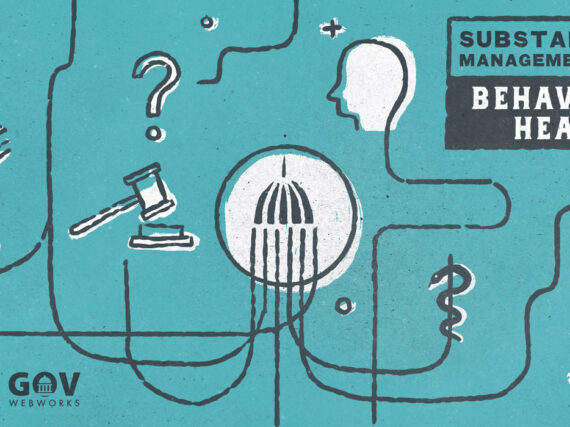Working as we do in some less populated states, we’ve been looking at the challenges for agencies providing services to the 60 million Americans (per 2010 Census) living in rural communities.
These challenges include:
- Delivering services to dispersed populations
- Large distances between offices and limited internet
- Workforce shortage in rural areas
- Low tax base to fund modernization
We want to look at the ways in which technology is changing how government operates in rural areas. As confirmed by Pew, “nearly two-thirds (63%) of rural Americans say they have a broadband internet connection at home, up from about a third (35%) in 2007,” which means more rural citizens can access services online than ever before. As well, there appears to be an increase in government employees working remotely in rural areas with flexible hours and mobile enabled devices.
Consequently, agencies in rural states are slowly but surely transitioning from the large physical infrastructure and centralized workforce with antiquated processing of the past, to the digital tools and mobile workforce of the future.
Rural changes
Certainly we have seen huge movement by the federal Center for Medicaid Services (CMS) to address service delivery in rural areas. Their new Rural Health Strategy outlines the following goals:
- Apply a rural lens to CMS programs and policies
- Improve access to care through provider engagement and support
- Empower patients in rural communities to make decisions about their health care
As part of this effort, CMS will be “collaborating with rural communication networks to develop and disseminate easy-to-understand materials” and “supporting the adoption of health IT and the development of infrastructure to enhance patient access to health information.” CMS will also “identify and accelerate evidence-based practices to improve access to services and providers in rural communities.”
These efforts by CMS reflect two primary aspects of successful delivery of public services in rural communities:
- Citizen Engagement Tools: Online applications that help citizens engage with government services.
- Agency Operational Adaptation: The ways in which governmental operations are adapting to meet modern needs via mobile workforce and tools.
Providing engagement tools that deliver services electronically helps citizens to access government tools from their own homes, without having to drive to a distant central office. Examples below include Kansas residents renewing vehicle registrations from their cellphones.
Furthermore, the changes detailed below to government operations around mobile workforce and mobile tools are starting to show promise for rural service delivery. Many jobs are being filled by remote contractors , and the use of mobile tools is on the rise – to maintain communication between people working from multiple locations.
Citizen engagement tools
Pew data makes it apparent that there’s a large shift in the usage of smart phones, now owned by up to 77 precent of Americans. Government can use this trend to better provide up-to-date information and access to citizens in rural areas.
“More and more state services such as fishing licenses, hunting licenses, state park passes, drivers licenses, and other licensing that can now be done online,” says Josh Karstens, director of the Project Management Office in Maine.
One example is Maine’s Department of Marine Resources, which issues licenses and documents fishery data. In the past, a user had to mail information to the department and wait for it to be processed manually, or drive to the office and wait for confirmation. Now the user can go online to create an account for a business or individual. They can then submit requests for licenses and upload catch data remotely.
In another example detailed by GovTech, Kansas is using the iKan application to centralize and provide certain state services such as online vehicle registration and access to official documents on one easy-to-use platform. – “The iKan platform also puts Kansas among a growing number of states that are working to consolidate the disparate services provided by many public agencies into a single online platform,” the article notes.
Thanks to such tools, states can supplement labor resources at physical offices where citizens complete printed forms (often with assistance) with automated and digital solutions.
It’s important to note that in both rural and urban areas, citizens are becoming increasingly dependent and expectant that government services be delivered electronically or via mobile. They don’t want to struggle to find out what programs are available to them or use a clunky app. As detailed in our post Why We Need a Customer Centric Revolution, if services are being automated, tools should be intuitive and easy to access.
Agency operational adaptation
On the operational side of things, Kelly Samson-Rickert, director of Workforce Development at Maine’s Office of Information Technology (OIT) has been looking at innovative solutions to attract and retain an increasingly mobile workforce in the state’s rural areas.
Some infrastructure, networking, and software development projects in Maine allow for creative labor resources. This makes it possible for selected OIT personnel to work remotely with flexible schedules. There’s also an apprenticeship program where students work a flexible 20 hours a week while they are in school. This program has led to a 75% retention rate in these students who are often hired by the state to help fill the skills gap that occurs in rural areas.
Furthermore, the adoption by agencies of mobile tools also allows employees more flexibility. They can use digital tools to meet the public directly in the field, or when working from home. Mobile enabled workers means more time interacting with citizens to meet their needs and foster deeper relationships.
Rural states could do well to look at the example of New York City. As detailed in a HISITAG talk by Lauren Aaronson, Assistant Deputy Commissioner at the Office of Business Process Innovation, social workers are equipped with tablets or mobile devices. These are used in the field when they interact with citizens, directly entering case notes into the department’s central database. This saves time, minimizes error, and allows greater worker focus in the field.
The same is true for Maine game wardens who need to be able to record notes or information while working in rural areas. They can capture data and images remotely and send these back to be stored centrally when they have access to wi-fi.
Another example at the state level is the mobile enabled Childcare Incident Tracker we built for the state of Idaho. This tool enables workers from the Department of Health and Welfare to enter live data into a centralized system both on site or at the office.
Such tools help to create a more citizen- and employee-centric approach to government service delivery in rural areas. Instead of making citizens come to services, services are coming to them. Additionally, case workers who are making notes in the field can both record more accurate assessments, and create more flexibility in their work schedules.
A final note
It’s important to remember that there are still issues with internet capability and reliable access in some states. This means that while many services can be delivered online, there still need to be channels for walk-in assistance. States must consider where it makes sense to spend tax payer money on digital services and when having a physical presence and manual processes is a better option.
To determine this, states must balance the investment needed to automate and digitize all aspects of governmental service delivery, and the ROI based upon the cost and maintenance of any new technology, with the number of people served. The hard truth is that funding may not always match the need.
However, states are making strides with limited resources and budgets to leverage technology in the effort to deliver services to rural citizens. There are many tools available to help agencies in this quest. GovWebworks is here to assist in the process of determining the best solutions.
Learn more
- 16 Key Features to Optimize Public Sector Sites for Mobile
- Kansas’ Digital Services Platform iKan Pushes New Governor’s Focus on Tech
- CMS Rural Health Strategy
- Let us know if GovWebworks can help with rural service delivery tools
Author bio
Ravi Jackson has a background in law, finance, and policy, with 10 years of experience in the Maine state government. A witty Brit with a gift for discourse, he welcomes further discussion on this topic. He can be reached at ravi.jackson@govwebworks.com and @RaviJacksonGWW on Twitter.







